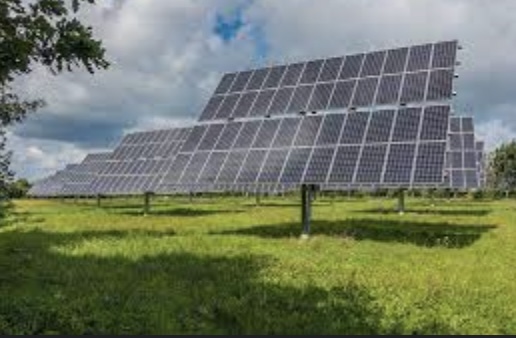10 Solar Myths You Should Stop Believing

Did you know there are plenty of solar myths running around? Learning about solar energy is cool, but it’s even cooler to learn about it smartly.
Check out this guide for information about the top solar myths running around. You may end with a new way of thinking about solar energy.
1. Cannot Function in Cloudy Weather
The idea that solar cannot function in cloudy weather is a common solar myth. However, while sunlight is blocked due to cloud cover, solar panels are still able to generate electricity effectively. Solar panels can generate electricity when the environment is being lit by diffuse light, such as indirect sunlight or general cloud cover.
2. It Is Not Reliable
This is simply not true. Solar energy is one of the most reliable sources of renewable energy available. Unlike other sources of energy such as natural gas, solar energy is not affected by unpredictable weather patterns. Solar energy is also unaffected by electricity shutdowns or outages.
In fact, with the emergence of progressive solar energy technology, solar energy is capable of storing energy generated during daylight hours and releasing it during nighttime ones. Solar energy is an incredibly efficient and reliable source of energy and should be taken into consideration when planning a green energy source. You can click on this site for more information about installing solar energy systems.
3. Make Your Home Unattractive
It is a myth that rooftop solar systems make your home unattractive. In reality, if planned correctly, the panels can blend in with your overall aesthetic. Many choose to have solar arrays placed close to the roof peak to provide the most power. Additionally, more modern solar panels are designed to seamlessly blend with the roof, while providing maximum efficiency.
4. Made of Toxic Materials
This couldn’t be further from the truth. Solar panels are composed primarily of aluminum and glass, both of which are recyclable. The only parts of a solar panel that comprises hazardous materials are the cells themselves, and those materials are fully encapsulated with a low level of toxicity if any at all. All in all, solar panels are made of materials that pose no harm to the environment.
5. Do Not Last Long
Solar energy systems represent a long-term energy solution that can be used for decades with proper maintenance. Contrary to popular belief, solar energy systems do not have a short life span. While their components may need to be monitored, solar energy systems typically come with a 25-year warranty.
Furthermore, solar energy technologies are only evolving, so the more recent systems are more efficient. As such, solar energy systems will continue to be viable, cost-effective solutions for the long term. In short, solar energy systems do not need to be feared due to their supposed short life span.
6. Require Constant Maintenance
Solar energy systems are completely self-sufficient once installed. All you need to do is occasionally brush off the panels if they get dirty. There’s no need to replace any parts unless something issues arise such as a broken inverter that needs to be serviced.
Solar systems are designed to last a lifetime and generally require very little maintenance by the home or business owner. Being aware of this solar power fact will help you make an informed and rational decision when deciding if solar is right for you.
7. Costs a Fortune
One of the most persistent myths is that solar energy is more expensive than traditional energy sources like electricity. This is simply not true.
In fact, solar energy is one of the most cost-effective and reliable energy sources. When looking at the overall cost of installing and maintaining solar energy systems, it becomes apparent that it is often cheaper than sticking with traditional means of electricity. You may end up saving more money in the long term since you won’t have to pay monthly energy bills.
The upfront costs may come as an expense, but the cost-efficiency of solar power should not be overlooked, it is a sustainable, reliable, and budget-friendly option in the long run!
8. Does Not Work in Extreme Temperatures
Solar energy works just fine in extreme hot or cold temperatures. Solar panels in some of the most extreme and unforgiving climates, including Death Valley in the US, still produce electricity reliably. The only true challenge posed by extremely hot or cold temperatures is storage; batteries may need to be replaced more often in colder climates, while solar panels in extremely hot climates may produce slightly less energy than they would in milder temperatures.
9. Use More Energy During Manufacturing
Solar panels produce more energy than it takes to manufacture them. Manufacturing solar panels require natural resources and energy, but the energy output of the solar panels far outweighs the energy spent on their construction. Solar panels can last for many years, so the energy produced in their life far exceeds the energy spent manufacturing them.
10. Reduce Your Home’s Value
One of the biggest myths is that solar panels will reduce your home’s value. This simply isn’t true.
Studies have shown that homes with solar panels tend to have a higher resale value than non-solar homes. The value of solar panels on a home acts similarly to the value of conventional renovations like remodeling a kitchen or adding a pool, it can boost a home’s value significantly.
Here Are 10 Solar Myths You Should Stop Believing
Solar myths are often found in outdated information and misconceptions. We now know solar energy is a clean, affordable, and reliable source of energy, and can be implemented in any type of home in any region. To find out more, contact a local solar energy provider to find out how solar energy can benefit you and your community.
Did you enjoy this article? Check out more on our blog now!




























